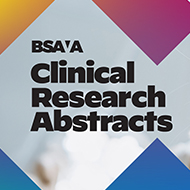Consultation seeks views of new system
A consultation has been launched by the Animal Health and Veterinary Laboratories Agency (AHVLA) regarding a new system of disease surveillance, that aims to provide better protection against new and emerging disease threats.
The consultation was launched on December 12, seeking views from vets, farmers and other interested groups on possible options for improving the veterinary scanning surveillance system in England and Wales, by making it more effective and efficient.
The consultation is based on the recommendations of the Independent Surveillance Advisory Group, which identified the following ways of improving the surveillance system.
One recommendation is to increase the geographical coverage of animal disease surveillance by offering an enhanced carcase collection service with a network of collection points to make the surveillance service more accessible to farmers.
Also, to improve the use of expertise and sources of data within the private sector by better integration of information and intelligence from private veterinary practices, universities and commercial laboratories.
Additionally, to reduce the number of surveillance sites to ensure remaining sites have access to a greater and wider range of cases and to make greater use of post mortems and testing by private vets and universities.
Nigel Gibbens, Defra’s chief veterinary officer, said: “Our veterinary surveillance system has played a key role in helping us to quickly spot and react to emerging animal disease threats, but we are always looking at ways to further improve this system by making it both more effective and more efficient.”
AHVLA will shortly be writing to key stakeholders, including key representatives from the veterinary profession and livestock farming industry, asking for views and comments.
Individual veterinarians and livestock keepers can participate in the consultation either through attending one of a series of regional stakeholder meetings or through an online survey.



 The BSAVA has opened submissions for the BSAVA Clinical Research Abstracts 2026.
The BSAVA has opened submissions for the BSAVA Clinical Research Abstracts 2026.